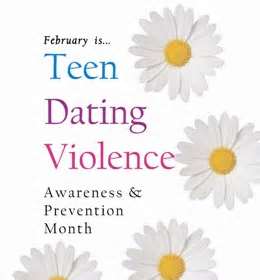Starting July 1, 2011, Virginia has made some changes to its Protective Order Laws (HB 2063/SB 1222). These changes were made to simplify the protective order process in Virginia; provide equal access to Protective Orders for victims of sexual assault, stalking, and dating violence; and to provide equal protections through court/law enforcement response to violations of protective orders for victims of sexual assault, stalking, and dating violence. These changes are:
Changes to Family Abuse Protective Orders: The definition of Family Abuse has now been revised to specifically include stalking and sexual assault within the definition. There have also been changes in the relief provisions. The new definition of Family Abuse is: “any act involving violence, force, or threat that results in bodily injury or places one in reasonable apprehension of death, sexual assault or bodily injury and that is committed by a person against such person’s family or household member. Such act includes, but is not limited to, any forceful detention, stalking, criminal sexual assault in violation of Article 7 (& 18.2-61 et seq.) of Chapter 4 of Title 18.2, or any criminal offense that results in bodily injury or places one in reasonable apprehension of death, sexual assault or bodily injury.
Changes in Family Abuse EPO, PPO, PO-Relief Provisions: prohibits acts of family abuse “or criminal offenses that result in injury to person or property.” Additionally, prohibits such contacts “by the respondent with the petitioner or family or household members of the petitioner” as the court deems “necessary for the health and safety of such persons.”
Changes to Acts of Violence Protective Orders: acts of violence or “behaviors” will be same as that of the new definition of family abuse, added the elimination of warrant requirement, applies the Law Enforcement Response for violations: “Pro-Arrest” provisions, and the 34rd or subsequent violation = Class 6 Felony.
There are new definitions of Acts of Violence, Force or Threat: that states, “Acts of violence, force or threat” means any act involving violence, force, or threat that results in bodily injury or places one in reasonable apprehension of death, sexual assault, or bodily injury. Such act includes, but is not limited to, any forceful detention, stalking, criminal sexual assault in violation of Article 7 (&18.2-61 et seq.) of Chapter 4 of Title 18.2, or any criminal offense that results in bodily injury or places one in reasonable apprehension of death, sexual assault or bodily injury.
Changes to Acts of Violence – Eligibility: deletion of references to specific acts, such as sexual battery, aggravated sexual batter, serious bodily injury, and stalking and replaced with references to “act of violence, force or threat” and the removal of warrant requirement.
Changes to Acts of Violence: EPO – Grounds. Here Law Enforcement or the Victim asserts that there has been an *Act of violence, force or threat and on that assertion, the magistrate finds that there is probably danger of a further such act being committed by the Perpetrator against the alleged victim or a petition or warrant for the arrest of the Perpetrator has been issued for any criminal offense resulting form the commission of an act of violence, force, or threat.
Changes to Acts of Violence: PPO-Grounds. Here a petition alleging the petitioner is or has been subjected to an act of violence, force or threat or a petition or warrant for the arrest of the Perpetrator has been issued for any criminal offense resulting from the commission of an act of violence, force, or threat and may be issued ex parte upon good cause shown. The immediate and present danger of any act of violence, force or threat or evidence sufficient to establish probably cause that an act of violence, force, or threat has recently occurred shall constitute good cause.
Changes to Acts of Violence: PO-Grounds. Here, a petition, warrant or conviction for any criminal offense resulting from the commission of an act of violence, force or threat has been established and a hearing held pursuant to subsection D of &19.2-152.9 (PPO Statute).
Acts of Violence EPO, PPOs, PO – Relief Provisions: prohibits acts of violence, force or threat or criminal offenses resulting in injury to persons or property; prohibit such contacts by the Perpetrator with the alleged victims or such victim’s family/household members as the judge/magistrate deems necessary to protect the safety of such persons and such other conditions as the judge/magistrate deems necessary to prevent (i) acts of violence, force or threat, (ii) criminal offense resulting in injury to person or property or (iii) communication or contact of any kind by the Perpetrator.
Court/Law Enforcement Response to Violations of Acts of Violence Protective Orders: makes consistent misdemeanor and felony penalties for violations of Family Abuse Pos and violations of non-Family Abuse Pos.; pro-arrest measure of violations of Pos or &18.2-57.2 will be added to violations of Acts of Violence PO; Law enforcement may request an extension of an Acts of Violence EPO, not to exceed 3 days, for a victim who I physically or mentally incapable of filing a petition for a preliminary or permanent protective order.
This is a lot to take in! So to Recap: These changes creates one standard for getting protections for victims of family abuse and for victims of other acts of violence, including sexual assault, stalking, and dating violence. It removes the criminal warrant requirement for the protective order issued by the General District Court, and adds enhanced penalties for violation of the protective order issued by the General District Court so that the penalties are the same as those for violating the Family Abuse Protective Order. Additionally, it requires law enforcement to make an arrest for violation of a protective order issued by the General District Court (Pro-Arrest provision).
If you need further information, please call the Virginia Sexual and Domestic Violence Action Alliance at 804-377-0335 and ask to speak to Gena Boyle.
